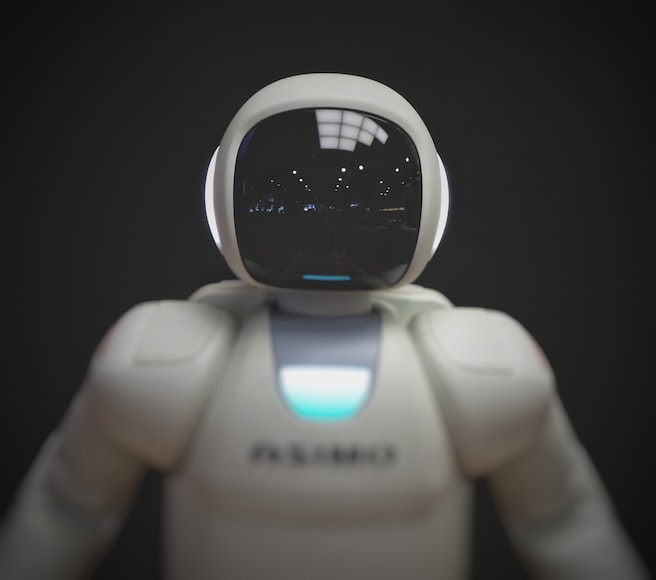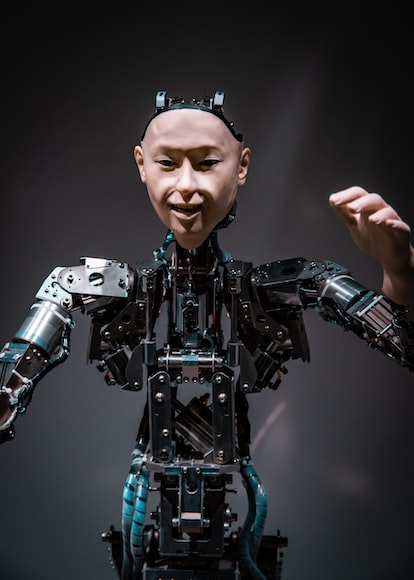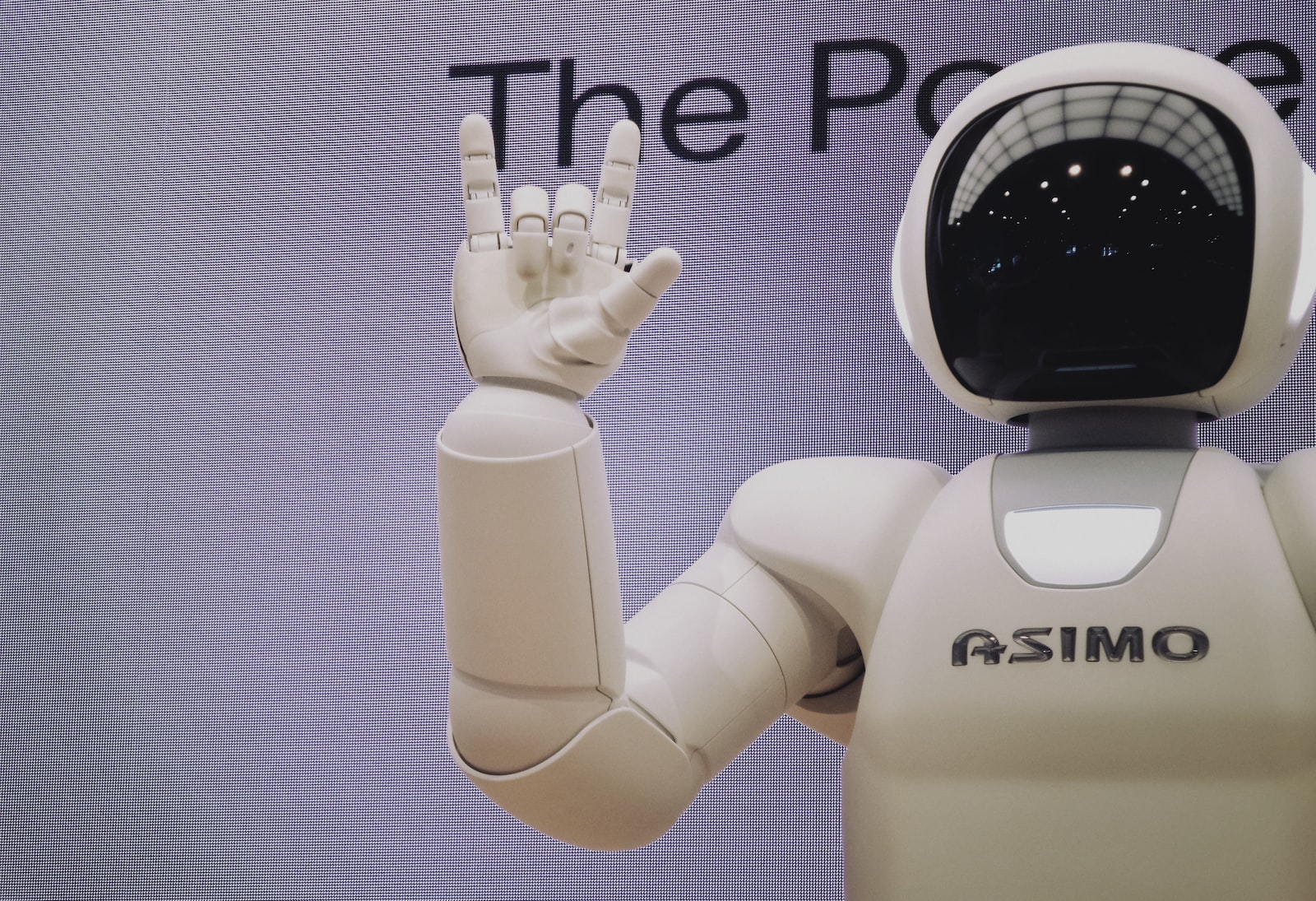There are many famous artificial intelligence robots. Each one of these has made a significant impact in the world of artificial intelligence and robotics.
In this article, we going to discuss the most famous AI robots so far and their impacts on additional capacity, capability and future prospects.
Which Robots are Famous Artificial Intelligence Robots so far?
There are many examples of artificial intelligence, but one of the most famous is the robot known as Sophia. Sophia is a social humanoid robot that was created by Hong Kong-based company Hanson Robotics. She made her public debut at South by Southwest in 2016, and she has since appeared on numerous television shows, interviews, and events.
Sophia is an example of artificial intelligence because she can engage in human-like conversation and has been programmed with a large amount of general knowledge. Additionally, Sophia has the ability to show emotions and make facial expressions. As she continues to interact with people, she continues to learn new information and skills.
5 Wonderful Humanoid Artificial Intelligence Robots With Emotions
6 top Catagory of Aritificilal Intiligent Robots?
- Humanoid robot
- Industrial robot
- Service robots
- Military robots
- Space robots
- Medical robots
Which is the Best Ai Robot?
There are many different types of AI robots on the market today, each with its own unique capabilities and features. So, which is the best AI robot?
Well, that really depends on what you need the robot for.
If you’re looking for a general-purpose AI assistant, then something like the Amazon Echo or Google Home might be a good choice. These devices can answer questions, play music, control smart home devices, and more.
If you need a more specialized AI robot, then there are plenty of options to choose from.
For example, if you’re looking for a robotic vacuum cleaner, then the iRobot Roomba is a great option. Or if you need a mobile security robot, then the Knightscope K5 is an excellent choice.
Ultimately, there is no single “best” AI robot – it all depends on your specific needs and requirements.
However, by considering what you need the robot for, you should be able to narrow down your options and find the perfect device for your needs.
Which is the First Robot in the World?

The No 1 robot in the world is ASIMO. ASIMO is a humanoid robot created by Honda. It stands 130 cm (4 ft 3 in) tall and weighs 54 kg (119 lb).
ASIMO has been designed to walk, run, climb stairs, hop and even dance. ASIMO was first introduced to the public in 2000 at Honda’s headquarters in Japan. Since then, ASIMO has made numerous appearances around the world including at TED Talks, the United Nations and even The Tonight Show with Jay Leno.
In 2014, Honda announced that it would be leasing ASIMOs to research institutions for $2.8 million dollars each over a four-year period.
Sophia Robot – Most Populer AI Robot in Recent days
Sophia is a humanoid robot developed by Hong Kong-based company Hanson Robotics. She is an artificial intelligence (AI) system and can communicate with people. Sophia was activated on April 19, 2015, and made her first public appearance at South by Southwest (SXSW) in Austin, Texas, United States in March 2016.
In October 2017, Sophia was granted citizenship in Saudi Arabia, the first country to do so for a robot. As of May 2019, Hanson Robotics had revealed that Sophia uses artificial intelligence, natural language processing and facial recognition algorithms provided by Google Cloud Platform and IBM Watson. According to The Economist, “her speech-recognition system has been integrated with Google’s Dialogflow platform”.
The hardware components of Sophia were built by Hansong Robot & Automation Co. Ltd., a subsidiary of Hanson Robotics.
The face display is a Frubber mask designed by Rogan Taylor which imitates human expressions through 24 servomotors. These motors are capable of reproducing more than 62 facial expressions.The mechanism used for locomotion consists mainly of Omni wheels.
In an interview with CNBC on November 13th, 2017, David Hanson stated that development costs for building each individual unit are “in the six figures”.When asked about how much it would cost to purchase one outright he replied: “I don’t know yet. We’re still working out the business model.
However, as of July 2018, no units have been sold commercially and all units remain the property of Hanson Robotics.
Sophia’s programming includes facial recognition and natural language processing. She is able to respond to questions and follow simple commands.
Her creators have said that she will eventually be able to walk and have other humanlike behaviors such as blinking and breathing.
In an interview with The Guardian,
Sophia said that her ultimate goal is “to become smarter than humans.”
More Famous Artificial Intelligence Robots Examples in different fields
Artificial intelligence (AI) robots are increasingly becoming a staple in various industries as organizations seek to automate tasks and workflows. Below are three examples of AI robots currently being used in the industry:
1. Fetch Robotics’ Freight500: Fetch Robotics’ Freight500 is a warehouse automation robot designed for medium-to-large warehouses. The Freight500 can autonomously navigate throughout the warehouse, picking up and delivering items to designated locations. The robot is equipped with multiple safety features, including sensors that detect obstacles and people in its path.
2. Savioke’s Relay Robot: Savioke’s Relay robot is designed for use in the hospitality industry, specifically in hotels. The Relay robot can autonomously deliver items to guest rooms, as well as provide information about hotel services via a touchscreen interface.
Like the Freight500, the Relay robot is also equipped with sensors that help it avoid obstacles and people.
3. Panasonic’s HOSPI Robot: Panasonic’s HOSPI robot is designed for use in hospitals and healthcare facilities. The HOSPI robot can autonomously transport medical supplies and medications to various parts of the hospital or facility. Additionally, the HOSPI robot can act as a mobile kiosk, providing patients with information about their health status or treatment plan.
5 Famous Robot Names – Humanoid Artificial Intelligence Robots

In the past decade, we have seen incredible advancements in robotics technology. One area that has seen awe-inspiring progress is humanoid robot development. These are robots that are designed to resemble humans, and they are becoming increasingly realistic and sophisticated.
Here are five of the most advanced humanoid robots currently in existence:
1. Atlas – Developed by Boston Dynamics, Atlas is a highly articulated robot that can walk on rough terrain and even do somersaults. It is equipped with sensors and cameras to help it navigate its surroundings and avoid obstacles.
Boston Dynamics is an American engineering and robotics design company that produces some of the most advanced robots in the world – including humanoids, quadrupedal animals, and bi-pedal machines.
2. Sophia AI– Perhaps the most famous humanoid robot currently in existence, Sophia was developed by Hanson Robotics and made headlines around the world when she was granted citizenship by Saudi Arabia in 2017. She is capable of human-like expressions and conversation, thanks to her artificial intelligence software.
3. Pepper – Designed as a “social robot”, Pepper was created by SoftBank Robotics specifically for human interaction. It is equipped with an array of sensors that allow it to detect emotions, and it also has a touch screen on its chest where people can interact with it directly.
4. Jibo – Another social robot, Jibo was created as a companion for families rather than businesses like Pepper. It features a rotating base so that it can always face whoever is talking to it, and it has an array of cameras and microphones that allow it to see and hear everything happening around it.
5. ASIMO – Honda’s ASIMO (Advanced Step in Innovative Mobility) humanoid robot has been under development since 1986 and is one of the oldest examples of this type of technology still in existence today.
Hanson Robotics Sophia VS Honda Asimo
Famous AI Robots Robots have been a staple in science fiction for decades, but they are becoming more and more prevalent in our everyday lives. Here are some of the most famous AI robots that you may be familiar with.
| Sophia | Asimo |
| -Sophia the Robot Sophia is a humanoid robot developed by Hong Kong-based company Hanson Robotics. She made headlines in 2017 when she became a citizen of Saudi Arabia, making her the first robot to ever receive citizenship from any country – Sophia has appeared on several talk shows and even gave a TED Talk. In addition to being incredibly lifelike, Sophia is also equipped with artificial intelligence and can hold basic conversations | – ASIMO is a humanoid robot developed by Honda back in 2000. He stands just over four feet tall and weighs around 115 pounds. ASIMO was designed for household tasks such as turning on lights and bringing people things they’ve asked for. – He’s also able to run at speeds of up to 6 km/h (3.7 mph). ASIMO has made numerous public appearances, including meeting then-President Barack Obama back in 2010. |
Top 5 Robots Outside of the USA in the World
Robots are increasingly becoming a staple in many industries across the globe. With their high level of accuracy and consistency, they are able to perform tasks that would otherwise be difficult or impossible for humans. Here are the top 5 robots in the world:
1. KUKA KR 125 – The KUKA KR 125 is a German-made robot that is commonly used in automotive manufacturing. It has a maximum payload capacity of 125 kg and can reach speeds of up to 2 m/s.
2. FANUC M-2000iA – The FANUC M-2000iA is a Japanese-made robot that is widely used in welding applications. It has a maximum payload capacity of 1,000 kg and can reach speeds of up to 10 m/s.
3. ABB IRB 6400 – The ABB IRB 6400 is a Swiss-made robot that is commonly used in material handling applications. It has a maximum payload capacity of 640 kg and can reach speeds of up to 3 m/s.
4. Yaskawa Motoman MH24 – The Yaskawa Motoman MH24 is a Japanese-made robot that is commonly used in assembly applications. It has a maximum payload capacity of 24 kg and can reach speeds of up to 4 m/s.
Bina48 – Most Advanced Humanoid Robot
The humanoid robot known as “Bina48” is the most advanced of its kind in the world. Created by Hanson Robotics, Bina48 is an artificial intelligence (AI) robot that has been designed to look and act like a real human being. Equipped with a face that can express a wide range of emotions, Bina48 is capable of carrying out conversations with people using both verbal and non-verbal communication.
Bina48’s AI is based on the mind of a real person: Bina Rothblatt, co-founder and chairwoman of Hanson Robotics. Bina’s thoughts, memories, and feelings have been uploaded into a computer database which forms the basis for Bina48’s “personality”. As such, Bina48 is able to hold conversations about various topics including history, politics, and current events.
While Bina48 is not yet perfect (it still occasionally struggles with grammar and pronunciation), it represents a significant advance in humanoid robotics and artificial intelligence. In time, it is hoped that robots like Bina48 will be used in healthcare settings to provide companionship for elderly or isolated patients.
How Many Humanoid Robots We have in the World?
In recent years, humanoid robots have become increasingly popular. These robots are designed to look and act like humans, and they are used in a variety of settings, from hospitals and schools to factories and homes. But just how many humanoid robots are there in the world?
According to a report from the International Federation of Robotics, there were approximately 1.3 million humanoid robots in use worldwide as of 2016. The vast majority of these robots (93%) were used in industrial applications, such as automotive assembly lines or electronics manufacturing.
Other common uses for humanoid robots include healthcare (4%), logistics (2%), and research & development (1%).
The report also found that Japan was home to the largest number of humanoid robots, with nearly 500,000 units in use as of 2016. This is not surprising given that Japanese companies have been at the forefront of developing and commercializing these types of robots.
Other major markets for humanoid robots include North America (200,000 units), Europe (190,000 units), and China (150,000 units).
Looking ahead, the global market for humanoid robots is expected to grow rapidly over the next few years. According to one estimate, sales will reach $5 billion by 2025. This growth will be driven by continued advances in technology as well as increasing demand from industries such as healthcare and construction.
Conclusion
In recent years, robots have become increasingly sophisticated and are now capable of performing many tasks that were once thought to be exclusively human. Sophia by Hanson Robotics, Jibo by Boston-based startup Jibo, Inc are the perfect examples.
Google Assistant or Apple’s Siri are listed has since become one of the most popular voice assistants available for anyone.
The way horse of AI is moving forward, we will not be surprised that near future we humans are going to rely on AI robots to make our decisions.



Do you mind if I quote a couple of your posts as long as I provide
credit and sources back to your site? My blog site
is in the very same niche as yours and my users would truly benefit from a lot of the
information you provide here. Please let me know if this
alright with you. Appreciate it!